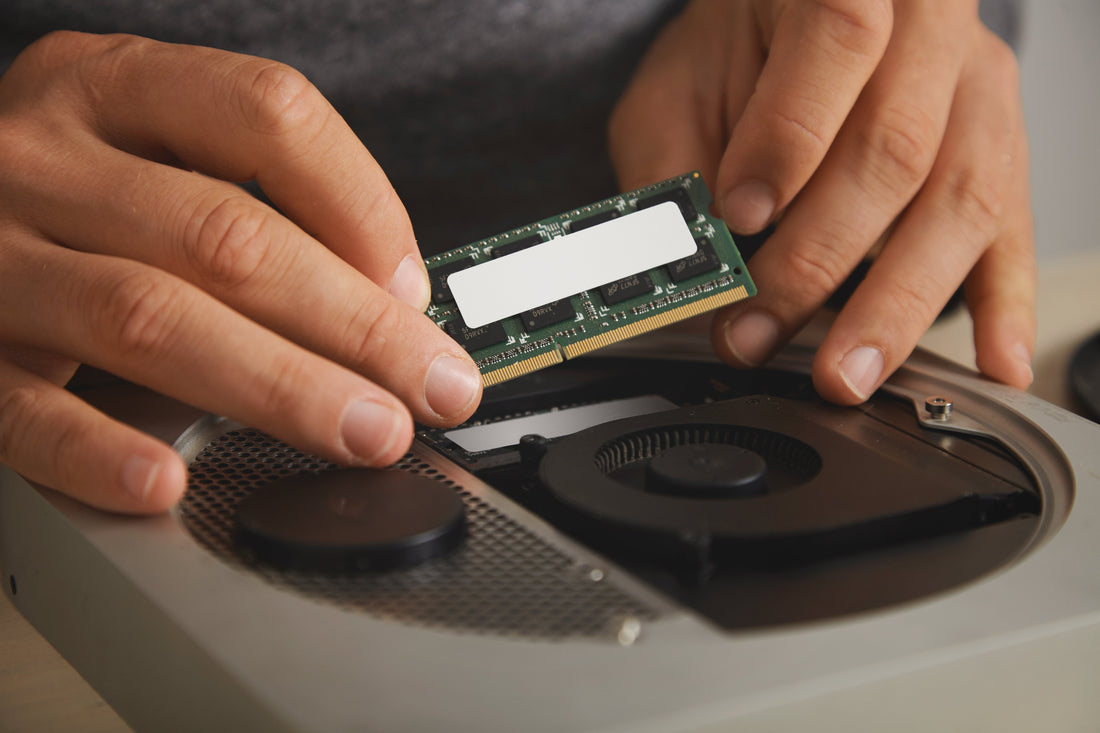Degaussing is the go-to solution when magnetic storage media containing sensitive data is no longer in use and needs to be safely retired.
What Is Degaussing?
Degaussing a hard drive is the process of permanently erasing data (or actually wiping it) from magnetic storage media, such as hard disk drives (HDDs), backup tapes, and floppy disks, by exposing them to a powerful, controlled magnetic field. This method completely neutralizes the magnetic patterns that hold the data, rendering the information unreadable and permanently destroying the drive's function.
When Should You Degauss A Hard Drive?
Degaussing is the go-to solution when magnetic storage media containing sensitive data is no longer in use and needs to be safely retired. Here are some cases where you’d need to degauss your data:
Recycling - Disposal Of Your Old PC Or Laptop
Because no one wants their precious data to be accessed by anyone else, look for proper degaussing services before recycling or responsibly disposing of your old laptop or desktop
That way, your personal files and information are permanently erased, and there’s virtually no risk of falling into the wrong hands.
Regulated Data
Organizations in regulated sectors - like government, finance, or healthcare - often rely on degaussing to meet stringent data destruction requirements, especially when handling sensitive or classified material.
However, in many such cases, physical destruction of hard drives is required by law so that even the tiniest chance of very sensitive data retrieval is eliminated for good.
Viruses And Malfunctions
When your computer is seriously malfunctioning or has been hit by a virus, hard drive degaussing ensures everything is wiped before you get rid of it.
Can A Degaussed Hard Drive Be Reused?
The short answer is no - you cannot reuse a degaussed hard drive. That’s because the strong magnetic pulse used to destroy data does more than simply erase it. It also damages the drive’s ability to function.
So, What Exactly Does Degaussing Do To A Hard Drive?
Modern HDDs rely on precisely aligned servo tracks and calibration data stored on the platters to guide the read/write heads. As degaussing randomizes the magnetic domains, the servo tracks are destroyed, so all firmware and factory calibration are wiped out, and the drive is thus inoperable.
Old Drives Vs. Modern Drives
As discussed in IT forums, “Old MFM hard drives can be low-level formatted. ATA / IDE / SATA drives all rely on servo tracks printed at the factory by a servowriter. Degauss one of those, and it goes straight to the e-cycle bin.”
True, ancient drives (like MFM types) allowed reformatting at a low level.
However, modern hard drives (like IDE, SATA, etc.) rely on servo tracks.
No Roadmap, No Recovery
During manufacturing, special devices called servowriters write these special servo patterns onto the drive’s platter, creating something like invisible roadmaps that guide the read/write head where to go.
So, when you degauss a hard drive, you're wiping everything magnetic off the platters. That includes your files and critical servo tracks.
Without these servo tracks, the drive has no idea where anything is.
When It's Gone, It's Gone
Degaussing is like erasing every road sign in a city and expecting a taxi to find your house. Once those ‘signs’ are gone, the hard drive is completely unusable — no reformatting, no recovery, no reuse. At that point, it’s ready for the recycling bin.
If you’re not into IT, here’s some more technical information to get a better understanding of the degaussing and data destruction process:
What’s A Servo Track?
Servo tracks are precise magnetic patterns on a hard drive’s platters that the read/write head uses to locate and follow data tracks. These patterns are written by sophisticated servowriters during manufacturing. They provide feedback signals that help the drive’s servo system determine head position, adjust its alignment, and synchronize platter rotation for optimal read/write speed and performance.
What’s A Servo Writer?
A servowriter is a highly precise, complex machine used in hard disk drive (HDD) manufacturing to write servo tracks. Servo writing is what actually enables the read/write heads of an HDD to follow their designated tracks accurately, because the drive itself isn't precise enough to perform this very detailed task.
The takeaway is simple: after degaussing, there’s no way back - no data, no recovery. So, now, the next thing to understand is how the process works.
How To Degauss A Hard Drive - The Basics
For data destruction to work, the degausser’s strength needs to match the drive’s resistance. It’s all about physics.
Every hard drive has a coercivity rating, which shows how tough it is to demagnetize and to wipe the data properly. The degausser must produce a magnetic field stronger than the drive’s coercivity.
Most modern drives have a coercivity of around 5,000 oersteds (Oe), so the degausser needs to generate at least 5,001 gauss to fully sanitize the data. If the magnetic field isn’t strong enough, the job won’t be done right.
Commercial-grade degaussers are designed to exceed this threshold and generate, for instance, a minimum of 10,000 gauss, which is roughly double the level required by most modern drives and tapes.
What Happens During Degaussing?
The idea behind degaussing is simple: disrupt the magnetic fields. Hard drives store data as 1s and 0s by aligning tiny magnetic domains on the surface of internal platters.
When the degausser creates its strong, carefully controlled magnetic field that overrides the existing magnetization, it scrambles the alignment of the domains and wipes out the neat patterns that stored the data.
How To Destroy All Data On SSDs? Can They Be Degaussed?
Degaussing only works on magnetic media (such as modern HDDs or ‘antique’ floppy disks and all types of tapes). SSDs (Solid-State Drives) don’t store data magnetically, so degaussing doesn’t work on them. Instead, they store data electronically on NAND flash chips. The best way to permanently destroy data on an SSD is by shredding it into small pieces.
Degauss Hard Drives With Green Wave Electronics And Stay Sustainable
Protect your sensitive assets and support the circular economy with Green Wave Electronics. Our expert team provides secure data destruction, including shredding and proper End-Of-Life (EOL) recycling services.
More than that, we offer comprehensive solutions to manage retired IT assets responsibly and compliantly, turning e-waste into valuable commodities.
Looking for secure data destruction and sustainability alternatives? Contact us today!



